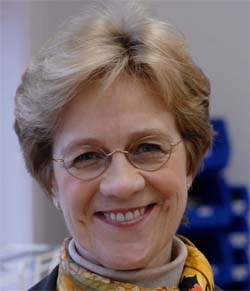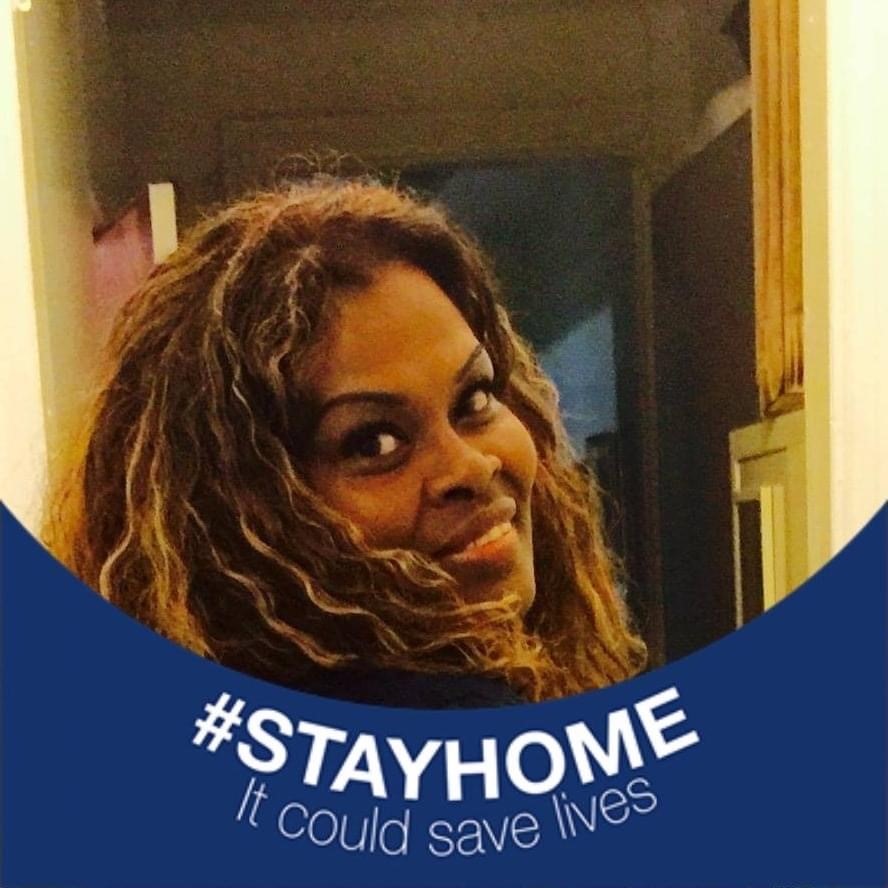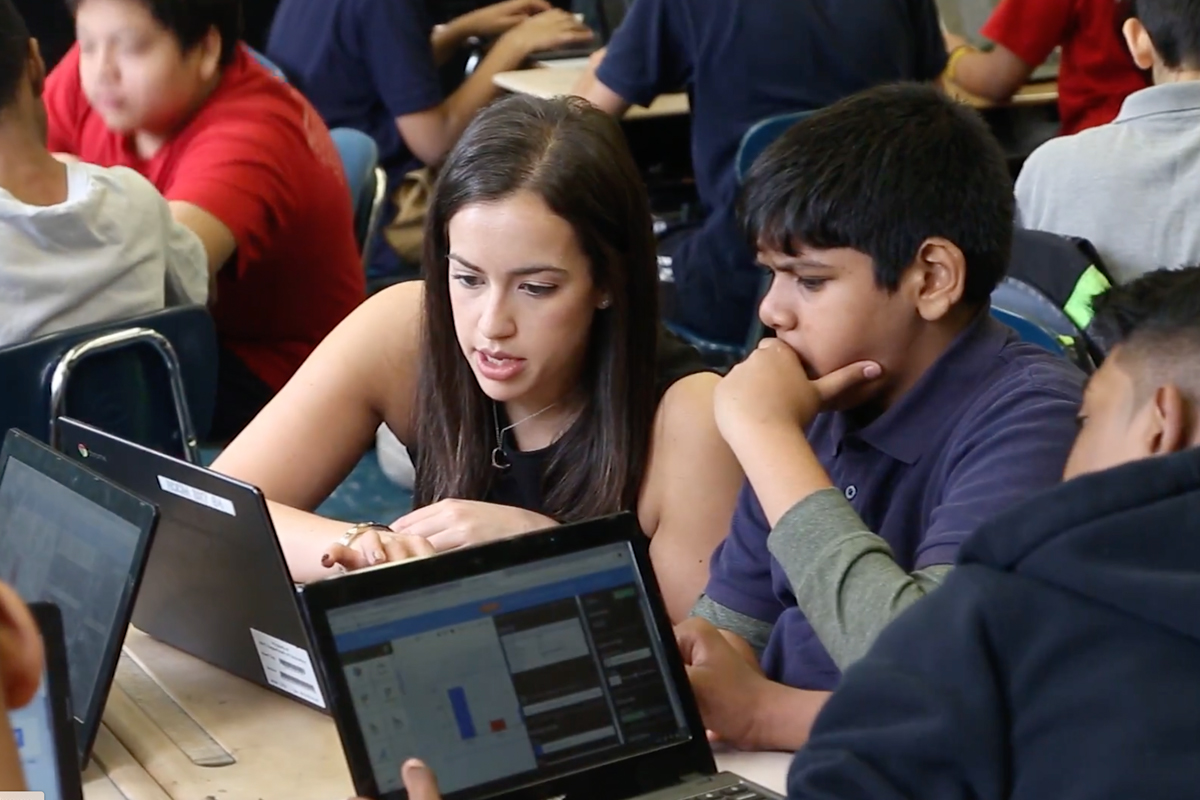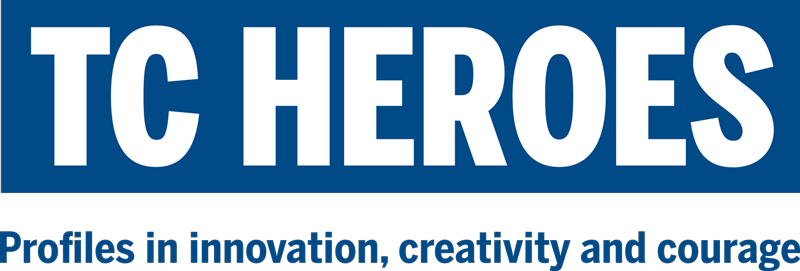It was Week Four of the COVID crisis in New York City, and the third-grade teacher in Washington Heights was struggling. As an opening assignment for a STEM unit (science, technology, education and math), she had shared an image representing scientists in a lab and asked her students to write a paragraph about what kind of science career they might want to pursue and why. Normally, she would simply have walked around the classroom, reading, encouraging and commenting on their work. But teaching a group of eight-year-olds remotely isn’t so simple. The Google Slides program used for the assignment wasn’t functioning as planned, and some of the kids were accidentally deleting the picture as they tried to type. The teacher wanted them to be able to see and comment on each other’s thinking, but she couldn’t create a writing space that connected to the picture. Technology, which was supposed to be saving the day, was mostly getting in the way.
Enter Teachers College’s Center for Technology and School Change (CTSC).
“After checking with a few colleagues for ideas, the teacher signed up for Remote Learning office hours with CTSC,” says Karen Kirsch Page, the Center’s Assistant Director for Professional Development and a facilitator for teachers in New York City and beyond. “We discussed her teaching and learning goals for the assignment, shared screens with her and co-constructed a solution that gave her the confidence to launch the assignment.”
A few days later, when the teacher sought additional help with a small glitch, CTSC was again there to support. Page, occupied with other teachers, reached out to another facilitator, Lucy Smith, a TC master’s student and former math teacher, who is temporarily working from her parents’ home in North Carolina during the COVID pandemic. “Lucy jumped right on the call and helped the teacher work out a small modification,” Page says. Amid a much larger crisis, a smaller one had been averted.
Thinking Big Picture
As the COVID pandemic unfolds, a huge part of the story has been the shuttering of live, in-person schooling for more than 1.5 billion children worldwide — and the heroic effort by schools and teachers to continue classes online. Amid that chaotic new landscape, CTSC, under the direction of Ellen Meier, Professor of Technology & Educational Practice in TC’s Department of Math Science & Technology, is much in the spotlight.

THINKING ABOUT TECHNOLOGY Meier has been working for years to create effective learning environments using technology. Now schools around the world are focusing on that challenge as never before. (Photo: TC Archives)
The Center’s professional development team, with its staff of eight facilitators, are a lifeline for 40 schools in New York City. During the past several weeks, with the support of existing federal funding, they have been busy providing virtual professional development meetings to almost 400 teachers and school leaders, including large and small group webinars with teachers and one-on-one virtual help sessions.
This professional development work takes place in the context of a larger research agenda, in which an additional dozen CTSC staff members, directed by Caron Mineo, also a TC doctoral student, investigates other technology and equity programs. Still another arm of CTSC, directed by Fenot Aklog, oversees the organization’s evaluation grants.

TEAM TECH From left: Fenot Aklog oversees the organization's evaluation grants; Karen Kirsch Page is leading CTSC's professional development efforts; and Caron Mineo heads up the Center's research efforts. (Photo: TC Archives)
More broadly, for the past 20 years, CTSC has been federally, state, and locally funded to research the pedagogical shifts needed to create innovative learning environments in which technology can help transform instruction.
But against the backdrop of the pandemic, the Center is emerging as a national leader in developing and modeling best practices for what is rapidly shaping up as a new era in education. “I believe we are different from other ‘hot line’ initiatives,” Meier says, “because we are at TC, where we can study what we are doing and what others are doing to continue to build better solutions and contribute to better theories for students, teachers, administrators, and the entire educational community.
The pandemic is a totally unprecedented situation for schools, but the core challenge is not entirely new. Teachers are being asked to design an environment that promotes core student understandings and also fosters collaboration, creativity, critical thinking and communication.
—Ellen Meier
“This is a moment when everyone is thinking about technology and we are in position to be helpful to schools, not only with technology per se, but importantly, with the underlying instructional strategies for thoughtful use of technology,” Meier adds. “So, yes, the pandemic is a totally unprecedented situation for schools, but the core challenge is not entirely new. Teachers are being asked to design an environment that promotes core student understandings and also fosters collaboration, creativity, critical thinking and communication. Those are the so-called four Cs for 21st century learning, but Dewey was talking about some of these same issues at the turn of the last century. There really is an enormous opportunity here to take advantage of this moment to design these new environments around what the learning sciences are telling us about deep and rich engagement. When students are working to solve culturally relevant problems through exploration and inquiry, learning happens.”
For Meier, a former Minnesota public school teacher, who co-chairs the University of the State of New York Council on Technology Policy and Practice, sparking that kind of deeper learning “is what teachers ultimately need help with, and what building administrators need to understand as the challenge for today’s generation.” It’s certainly appropriate, she says, that the New York City Department of Education has been focused on getting every child a computer or iPad and ensuring access to the internet — but a transitional professional development process is needed, she explains, to help teachers learn to engage students online. To prompt a more thoughtful response, CTSC meets each school and each teacher on their own level, using a design approach built around “situating” each teacher’s work.
We’re not coming in with a pre-set box of tools. Teachers have often spent years building their classroom environment — what they put on the walls, what books they keep on the shelves — and now they’ve been asked in a very short time to build a new classroom or learning environment online.
—Karen Kirsch Page
“We’re not coming in with a pre-set box of tools,” Page says. “Teachers have often spent years building their classroom environment — what they put on the walls, what books they keep on the shelves — and now they’ve been asked in a very short time to build a new classroom or learning environment online. And some have large numbers of students who are in transient housing and may not have immediate or easy access to technology. Others are dealing with parents who are supporting students’ daily learning for the first time. So, we’re not going to do a webinar where we talk at teachers for half an hour. We start by assessing their needs. We discuss scheduling live-learning sessions. It’s interactive and it’s all rooted in the learning sciences. And we have this beautiful array of talented former teachers working as facilitators, who are now in graduate school and can relate to other teachers really well.”
On the Ground
The CTSC model has three core objectives, which the Center works to advance concurrently, with each element reinforcing the others:
Design, which entails engaging teachers as designers of student-centered, authentic learning experiences
Situate, which is all about creating learning experiences for teachers that are adapted to a particular school and its own set of needs
and Lead, which focuses on supporting school leaders in guiding and sustaining change initiatives, while positioning teachers as agents of change.
So, for example, at MS 267 in Brooklyn, where the Center is engaged in ongoing National Science Foundation-funded work, Page has been working one-on-one for the past several weeks with Principal Patricia A. King. As the leader of a school whose full name includes the words “for Math, Science & Technology,” King prides herself on working perpetually to become computer-savvy. Like most administrators, she was thrown for a loop by the sudden demand to transition to remote learning. As the New York City Department of Education worked to close the “technology divide,” she faced numerous challenges, from getting devices into the hands of all students and to switching to Google Meet and Microsoft Teams after schools were ordered to stop using Zoom because of privacy concerns.
We all had to leave the school on the spur of the moment, and we thought we’d come back, but then we never could. Then we had to switch to these new platforms. So, I wanted to get acquainted with them quickly so that I could think like my teachers and also see what it looks like for the children.
—Patricia A. King
“We all had to leave the school on the spur of the moment, and we thought we’d come back, but then we never could,” she says. “Then we had to switch to these new platforms. So, I wanted to get acquainted with them quickly so that I could think like my teachers and also see what it looks like for the children.”
The result, King says, has been that she’s been better able to serve as an instructional leader.

LEARNING ALONG WITH HER SCHOOL Principal Patricia A. King has been working with CTSC to understand the technology challenges faced by her teachers and students. (Photo courtesy of Patricia A. King)
“Initially, we weren’t engaging students with active teaching. People were uploading awesome Power Points, but those noble acts were not enough to be considered effective teaching — the kids needed to see and hear the teacher and each other. With Google Classroom, I can see the quality of the assignments and see the feedback teachers are giving. No one can fly under the radar.” She laughs. “I visited eight classes yesterday, and I can give feedback — ‘Instruction is moving in the right direction’ or ‘How can we make this assignment more rigorous,’ or ‘This instructional model is too boring and lecture-like.’ Because kids don’t want to hear, you talk, talk, talk. The students are digital natives. They quickly transform into technocrats at an early age. Engaging lessons provide opportunities for students to explore and move. So, our teachers have to create interactive digital instruction to catch up with the kids.”
At a CTSC federally-funded Magnet partner — M.S. 358 (the Magnet School for STEAM Exploration and Experiential Learning) in Queens — Jacqueline Rodriguez, Magnet Coordinator, goes so far as to frame teacher learning as the central challenge for schools during the COVID crisis.
“All this happens through the learning of adults, and adult learners are unique — they learn differently,” Rodriguez says. “We’ve had a lot of support from CTSC during the past two years. We had many good structures that promoted collaboration, and they helped us make it better, keeping in mind our school culture and our wanting to include more digital aspects even before working remotely.”

BUILDING CAPACITY Magnet School coordinator Jacqueline Rodriguez is enthused about how teachers at her school are collaborating to use new technology platforms. (Photo courtesy of Jackie Rodriguez)
For Rodriguez, the week of April 13th —— when NYCDOE scrapped spring break and called upon schools to schedule non-academic programming for kids — offered a litmus test for just how far M.S. 358 has come. The school conducted planning sessions the previous Thursday and Friday and then delivered a slate of activities facilitated by a futuristic-sounding array of interactive platforms that included Flipgrid, NearPod, Padlet, and Canva. There was a virtual tour of a museum and sessions in which recent M.S. 358 graduates spoke with seventh and eighth graders about their experiences in high school. But Rodriguez was particularly enthused with the week’s culminating project, in which sixth graders created messages and artwork for Signs for Heroes, an initiative that is delivering thank yous and encouragement to health care workers on the frontlines of the COVID crisis. The project was led by two teachers who had not worked directly with CTSC — proof for Rodriguez that the Center’s coaching has truly affected the culture of the entire school.
“Signs for Heroes” on Padlet
“All of the ideas came together as grade teams planned, and we were able to put different teachers together, including some who could help others on using the different platforms,” Rodriguez says. “The collaboration was incredible, which is so important, because that’s really how you build capacity.”
I don’t believe K-12 or higher education will ever be quite the same,” says Ellen Meier. “Education is going to include more technology, and the challenge is to prepare teachers to use it creatively to ensure that our students are creators who use tools for problem-solving.
—Ellen Meier
And where there’s capacity, there’s qualitative as well as quantitative change.
“I don’t believe K-12 or higher education will ever be quite the same,” says Ellen Meier. “Education is going to include more technology, and the challenge is to prepare teachers to use it creatively to ensure that our students are creators who use tools for problem-solving. The good news is that teachers clearly are eager to learn. They need time and support to make this transition.”
“These teachers are problem-solving right and left,” adds Karen Kirsch Page. “They’re creating in front of us. It’s the analogy of building the car while driving it. But we’re not seeing people give up — they’re only getting stronger while they do it.”
At M.S. 267, Patricia King believes that the changes are raising not only her school’s game but the system’s as well.
“If you ask me what’s the biggest change — every remote class now has an interactive digital piece,” she says. “So, ultimately, good will come from these rough times. There will be a systemic change — the entire DOE is becoming digital, which it should be.”
For more stories on digital teaching and learning, explore The Digital File, an ongoing series spotlighting the efforts of TC faculty members to adapt and enhance their teaching in a new era of remote learning.

